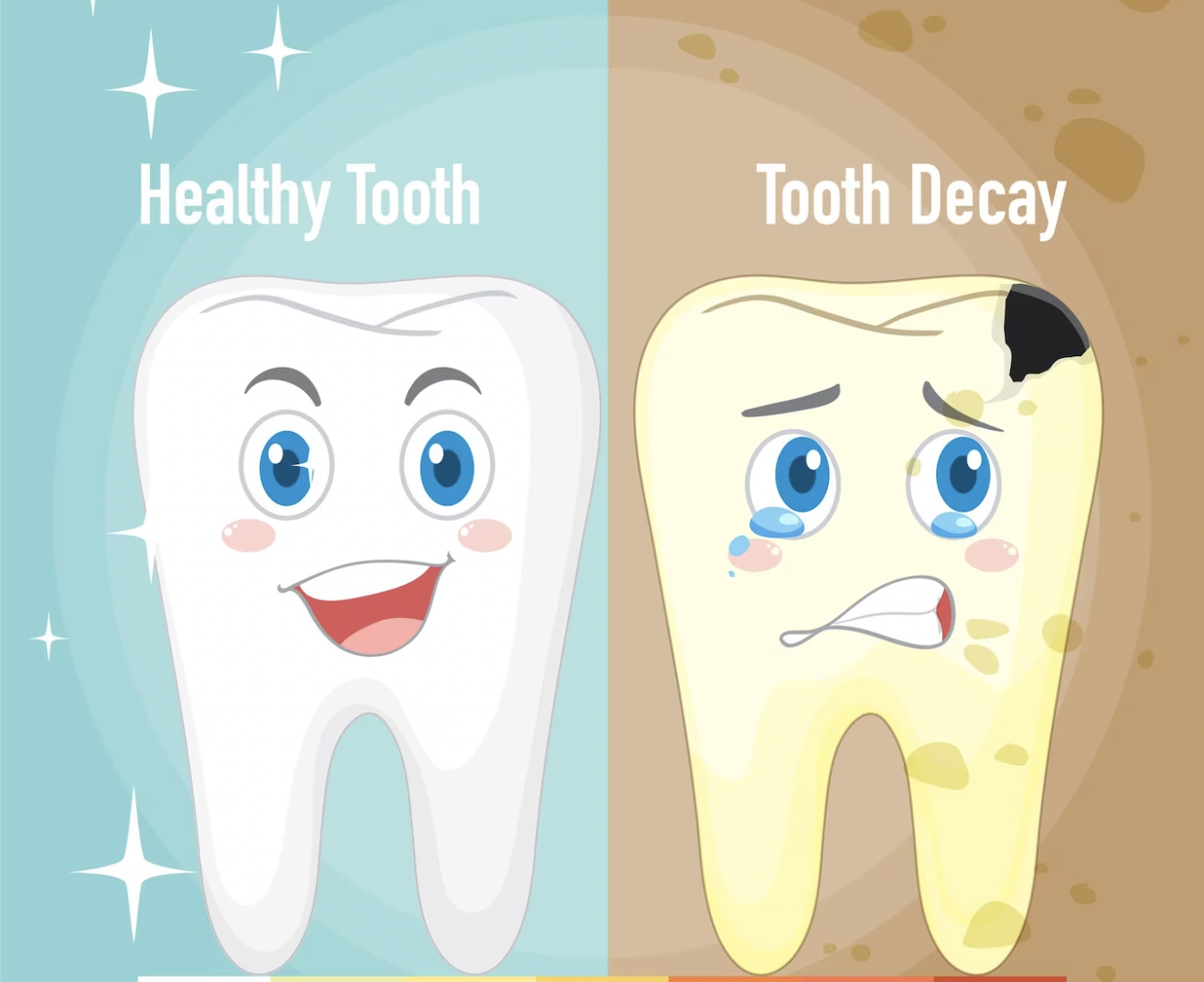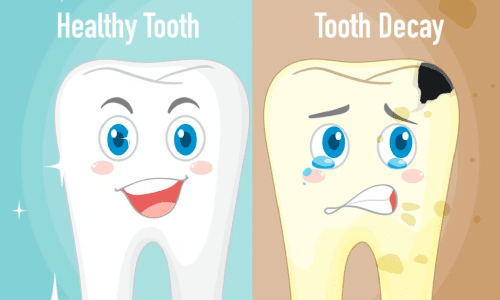8 Common Oral And Dental Concerns
Common Oral And Dental Concerns: Many people desire to have a perfect smile at all times. A healthy, complete, aesthetic set of teeth makes a smile look more attractive. Unfortunately, many people do not possess that killer smile because they suffer from oral and dental issues. The good news is that common dental issues are preventable and treatable. It is possible to have a flawless smile by taking oral health and hygiene seriously. For this, awareness of common oral and dental problems is important.
Keep reading to learn about 8 common oral and dental concerns along with their treatment and prevention.
Common Dental Problems and Treatment

1. Tooth Decay/Cavities
This dental problem can happen to anyone, including young children with milk teeth. It is the result of enamel erosion by acid attack. The acid attack occurs when the plaque on the teeth combines with the starchy, sticky food leftovers in the mouth. If left untreated, the decay can cause permanent damage in or around the tooth surface. This results in visible holes in the tooth- a condition called a cavity. The symptoms of cavities are toothache, sensitivity, tooth stains, and painful biting.
To prevent tooth decay or cavities, it is necessary to stick to a good oral hygiene routine. It is also critical to go for regular dental check-ups and cleanings at least bi-annually. Depending upon the severity of tooth decay, its treatment can involve dental filling, tooth capping, or a root canal.
2. Gum Disease
It is the most common oral and dental problems among adults caused by dental plaque buildup. The risk of developing gum disease is more in the case of smoking, dry mouth, and diabetes. The condition has three stages: gingivitis, periodontitis, and advanced periodontitis.
Gingivitis is a gums infection that is reversible with treatment. If ignored, gingivitis can progress into gum disease which can ultimately cause more serious dental issues. Advanced gum disease can cause tooth loss. The symptoms of gum disease include bleeding gums, bad breath, red, swollen, or tender gums; loose teeth, and pus development.
To prevent gum disease, it is important to practice good oral hygiene and go for regular professional cleaning. The gum disease treatment options include root planing and scaling.
3. Dry Mouth
A dry mouth or Xerostomia is an oral condition wherein the mouth is not able to keep itself moist. It happens because of insufficient production of saliva inside the mouth. Saliva is an extracellular fluid secreted by the salivary glands. Its role is to keep the mouth wet and prevent plaque build-up, cavities, and eventual tooth decay.
This is a common dental concern. Common symptoms of dry mouth are bad breath, dry or grooved tongue, thick and stringy saliva, and a change of taste. In addition, dry mouth can cause a feeling of stickiness inside the mouth, dry/sore throat, and difficulty chewing, speaking, and swallowing.
There are many culprits for dry mouth such as smoking, nerve damage, health conditions, stress, age, and prescribed medications/ chemotherapy. Avoiding or treating the underlying cause with medications and moisturizing products can help. But, there is no cure for dry mouth.
4. Bad Smelling Breath
Bad breath, medically termed halitosis, is an embarrassing oral concern that anyone could face at any time in their life. It can affect the social interactions of an individual. There are various reasons behind bad breath such as having food or drinks with a strong odor. However, dental researchers say that persistent bad breath usually is a result of some underlying dental condition.
The oral causes include cavities, gingivitis or periodontitis, dry mouth, bacteria residing on the tongue, and even oral cancer. Some cases of bad breath are a result of some specific disorders. The non-oral causes include endocrine, cardiovascular, and gastrointestinal system disorders, liver or kidney disorders, respiratory issues, and ENT-related problems.
A temporary fix for bad breath is the use of mouthwash and drinking adequate water daily. Its best remedy is to identify and treat its underlying cause.
5. Tooth Sensitivity
Tooth sensitivity is a dental condition wherein exposure of teeth to hot or cold or sugary foods/drinks causes pain or discomfort. People may even feel tooth sensitivity when brushing and flossing. The causes of this concern include a dental abscess or a cracked/chipped tooth.
A dental abscess is the result of a bacterial infection that causes pus to build up inside the teeth, gums, or jawbones. A cracked tooth is a dental injury that one can experience while biting on hard food items. To fix it, the dentist may use a tooth-colored filling, dental veneer, or dental crowns. Dental bonding, root canal, or the use of desensitizing toothpaste can help treat tooth sensitivity.
6. Mouth Sores

Mouth sores are painful lesions formed in the soft tissues of the mouth. There are different types of mouth sores. These include cold sores, canker sores, thrush/ oral candidiasis, leucoplakia, gingivostomatitis, oral lichen planus, and oral cancer. The most common mouth sores are canker sores or cold sores.
The mouth sores may appear on the tongue, lips, gums, cheeks, and the floor or roof of the mouth. They can make eating and drinking uncomfortable. Some mouth sores like canker sores can generally go away within two weeks. There are over-the-counter products like steroid gels, anti-inflammatories, and pain relievers available to heal mouth sores.
7. Stained Teeth
Teeth staining or discoloration is possible with some foods, chewing or smoking tobacco, intake of certain medications, and trauma. People can remove or lighten their teeth stains by using teeth whitening agents. There are at-home and in-chair teeth whitening treatments in Chicago at First Point Dental available to lighten the shade of the natural teeth.
8. Tooth Crowding
Tooth crowding is a cosmetic dental concern that can lead to bite issues and eventually TMJ disorder. It is a type of malocclusion which happens when the mouth has not enough space to hold new teeth. It occurs when teeth erupt in unnatural positions. The go-to treatment for tooth crowding or correction of malocclusions is dental braces. There are various types of braces available to realign adult natural teeth.
The most sought-after among them is Clear Aligner. If tooth crowding is left untreated, the jaw issues like TMJ disorder would need surgery to fix themselves.
Do visit First Point Dental to get a healthy smile and oral health. The clinic dentists offer best treatment for all types of common oral and dental problems. Do visit the clinic to learn more!

